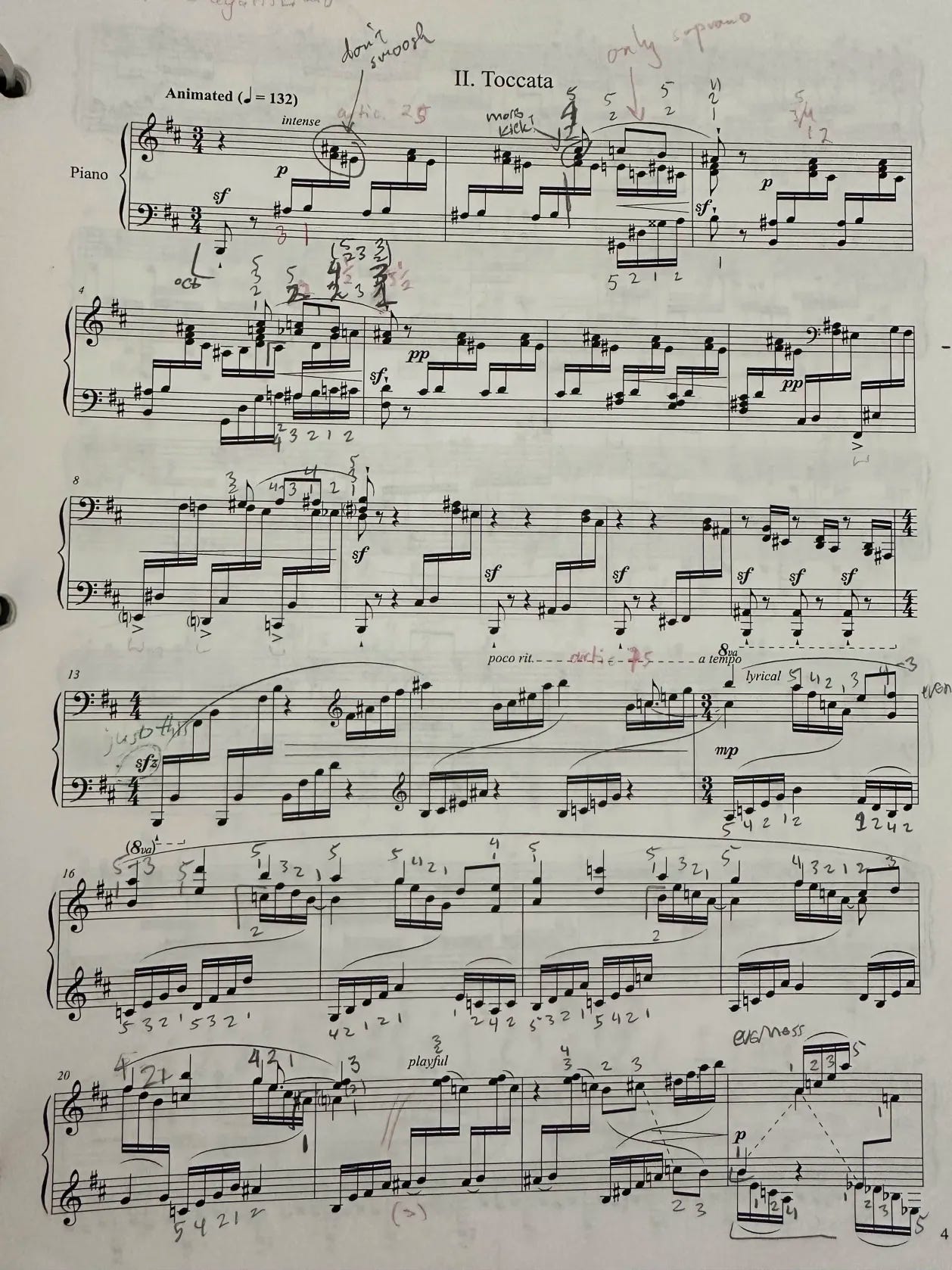Program notes for Holden’s composition Toccata. More to come later, for other works. See details about our composition recital and RSVP here.
This is the companion piece to and comes after Serenade.

Toccata is a uniquely physical experience. It interrupts itself with deep accented bass notes, which produce reverberations we can feel; its volatile perpetual-motion engine leaves no time for thought or meditation. Its rhythm registers as much in the body as it does in the mind. In this sense, and in many others, Toccata is the opposite of Serenade.
Toccata’s main motif, a series of four descending notes in half-steps that ends in a bang!, proceeds at a pace that lends it a certain brutality. It is a warped, inverted version of Serenade’s I love you: percussive rather than lyrical, dissonant rather than harmonious.
Beyond the harmony of chords, Serenade is a story of the harmony of lovers. So Toccata is dissonant in more ways than one, too. In addition to its chromaticism, Toccata’s individual sections clash; if they were wrestled into a narrative, it would be jagged, uneven. Designed to be abstract, Toccata resists such easy categorization.
Beyond the lyricism of Serenade’s songlike melody, Serenade swells and fades much like the human voice. So Toccata is percussive in more ways than one, too. In addition to its deep accented bass notes and rhythmic intensity, Toccata features mostly short, clipped melodies, almost like vulgar utterances. In fact, the sharp cutoff of Toccata’s main motif’s last note simultaneously functions as an abrupt truncation of Serenade’s song—from extended melody to four-note motif.
As such, the differences in their themes are a microcosm of their overall differences. So it makes sense that where Serenade ends gently, harmoniously, tapering the way singers do, Toccata ends with a dissonant, percussive, blood-and-guts coda—the last note predictably unpredictable.



wow everyone will know my birth year now